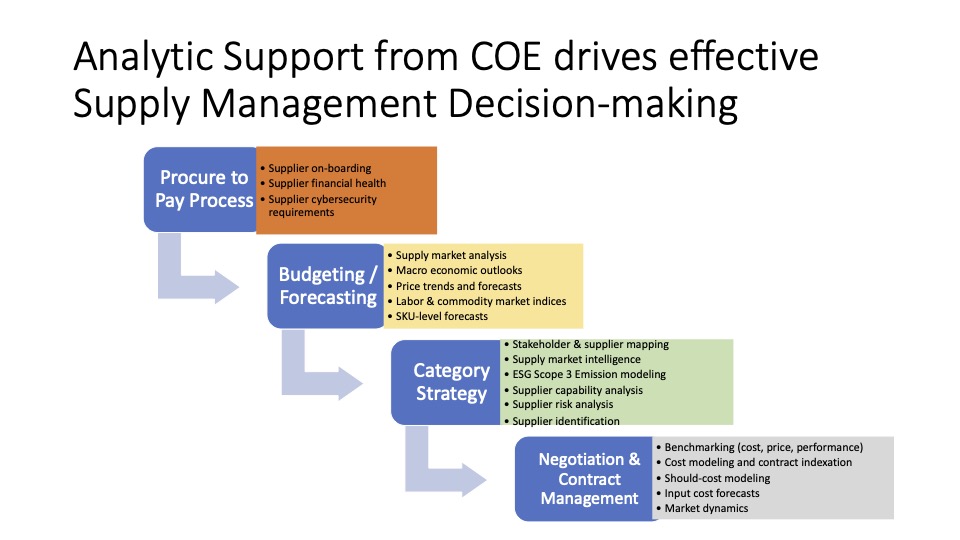Craig Reed from Dupont: Battle Tactics for Technology Innovation
A good friend, Craig Reed, presented this morning at the ISM Global Procurement Tech Summit. He serves as Director, Raw Materials, Energy and Packaging at Dupont. He has a long history in procurement, working Eaton, MWV, Delta, Deere, BMW and Honda, and he is also an ISM Board member. Craig is an old colleague, who has a long history working with NC State and the Supply Chain Resource Cooperative.
Craig spoke on the challenges of adopting technology in a large company, in which there are niche systems, large ERP systems, and much of the data resides on people’s desktops. He believes the cloud is very important for corporations to think about using multiple sources of touch points into Sharepoint, and other forms of integration into data.
One of the big things Craig thinks about in his role is how to drive value. Dupont announced that it would merge with Dow Chemical – creating one of the largest companies in that industry. When Dow and Dupont merge at the end of this year it break into three companies: Ag markets (seeds, chemicals that protect the seeds, herbicides etc.), an advanced material business on plastic, aerospace and automotive, and a specialty products (industrial biosciences, nutrition and health.)
With a a merger comes expectations – the expectations is $3B of synergy from these two coming together – and a big expectation for procurement and sourcing. He notes that “We need to leverage the INFORMATION part of IT. It is important for information to be strategic as well as agile.”
The big issues Dupont faces are oil prices, commodity prices, palm oil and currency. The last point is key. Dupont does business in 180 countries and sells in a lot of currencies. The issues involve handling contracts, and the balance of trade on the financial side of the equation with the buy side of the equation. Craig notes that “We partner with finance to figure out how to set up contracts to leverage expectations on currency. We had a lot of dollar based contracts and with the dollar peaking – created a difficult situation for suppliers because the breakeven point of those contract. Or those in local currency also were an opportunity to drive value. There was an expectation on operations and finance to drive value for the corporation and it wasn’t an easy task!”
What are the opportunities? We need to build on what we’ve got. Start with what you have and what you need strategically – the best way to gain some traction on alignment. From a technology standpoint. Also critical is alignment with the IT organization. We have a CIO that sits on our staff – and accountability for soucing and logistics – and we sit on his staff – and we have responsibility for sourcing IT for the organization. So it is really a partnership in the organization and highly strategic for us to be aligned. If you CIO understands what you want to do and we have a single solution that gets us 80% of what you want and he defines requirements for your world – he doesn’t understand your needs. At my last company – he understood the opportunity for sourcing and logistics. We need to get someone else advocating for us – and we are still a cost center and budget based, and they tend to be flat and go down. So hardest thing for us to do is to make an investment that is difficult to quantify. But IT can help you to be an advocate in that process.
Craig concluded with some key takeaways. “We have to have the best and brightest. Data is great – but it’s only useful when it’s information that provides insight and intelligence. Information is the key to strategy. It’s the key to agility, It’s the key to unlocking value. Business adoption moves slower than technology innovation. So there is a need to speed up adoption of innovation! We need strategies so technology remains an enabler rather than a barrier. But the opportunities are there if you stay in touch with tech innovation.”


